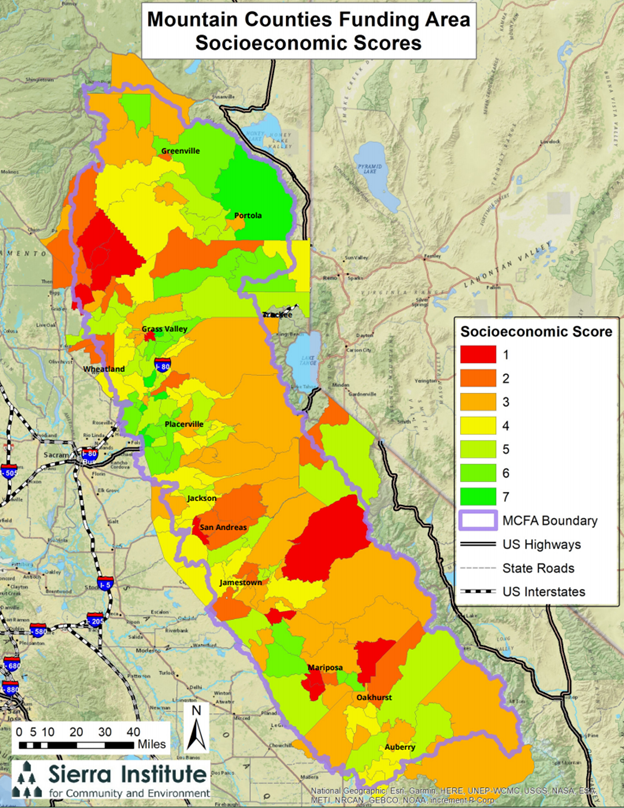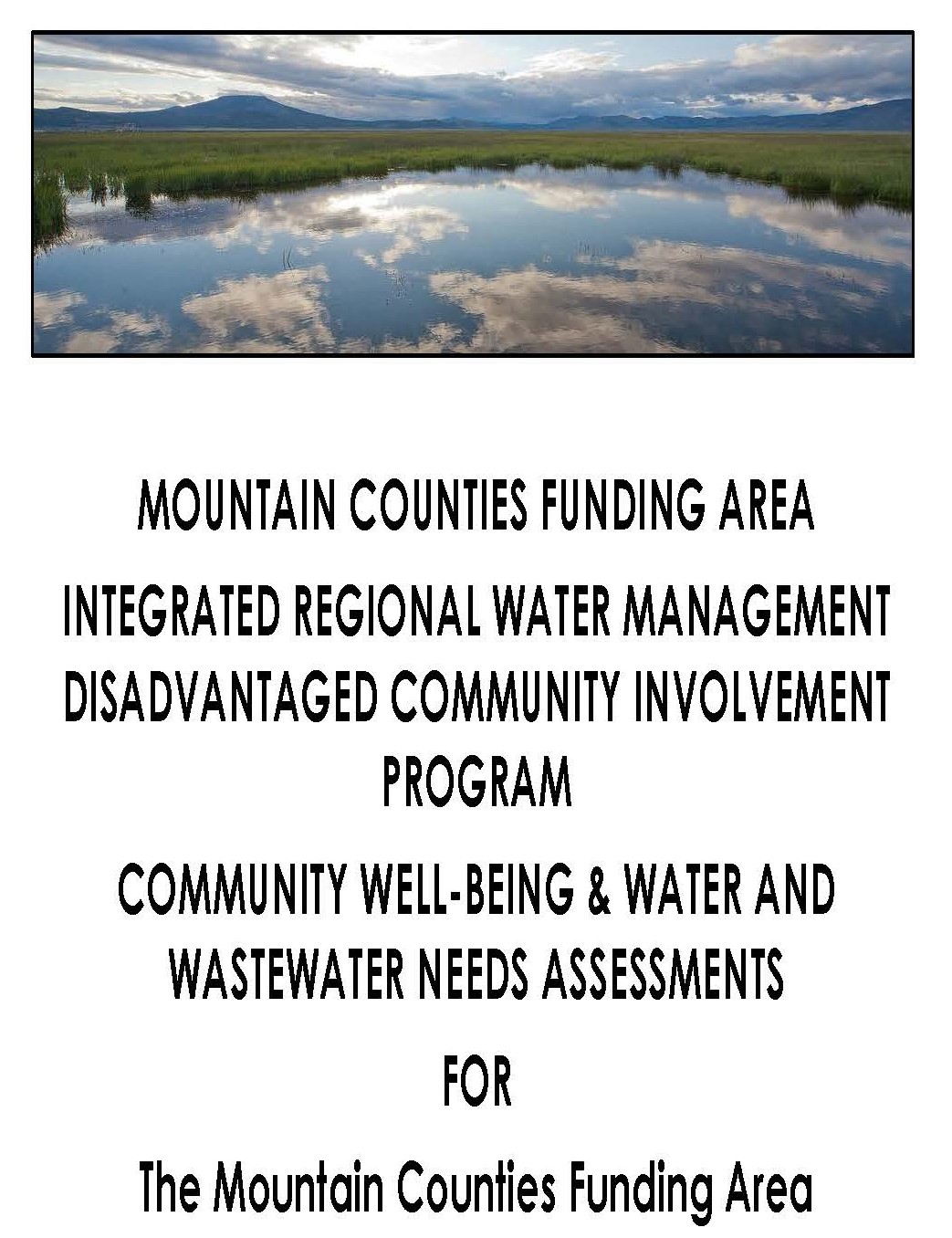New Research Reveals Aging Water Infrastructure Problems and Disadvantaged Communities Miss Out on Funding Due to Inadequate Measuring Tool

Sierra Institute for Community and Environment & Sierra Water Workgroup are proud to announce the publication of its new report.
Click the image above to download the report in PDF.
Rural communities suffering from failing infrastructure and low capacity often miss out on important funding opportunities because the methods used by state agencies to determine eligibility are inadequate for rural forested areas.
Pockets of wealth (around a lake shore or golf-course development, for example) raise the median household income (MHI), which can mask the poverty of nearby communities.
Click Here to Download the Infographic
Map of MCFA CalEnviroScreen Scores. Note that there are no high scoring communities in the mountains.
A widely utilized tool, CalEnviroScreen, uses a range of metrics beyond median household income to score communities. Yet, according to this tool, all communities in the Mountain Counties Funding Area (including Paradise and other nearby impoverished areas) “have high scores, (meaning minimally disadvantaged) despite significant challenges from dangerous episodic smoke from wildfires, along with poverty, unemployment, failing infrastructure, fire risk, low political support or representation, and low organizational capacity.”
See Maps

Many of these small communities have limited tax revenues, shrinking populations, and heavy infrastructure burdens—and yet many of the programs that exist to help such communities don’t recognize their need.
Low population means few voters so political representation can also be lackluster.

This important research by Sierra Institute employed a combination of community assessments that avoid the pitfalls of both MHI and CalEnviroScreen. It consisted of a community capacity assessment based on the knowledge of community residents regarding the ability of their communities to tackle internal and external stressors (like wildfire), and a quantitative socioeconomic assessment based on six metrics drawn from U.S. Census Bureau statistics.
Both of these methods have relatively low correlation with simple MHI, with CalEnviroScreen, or with each other, indicating that they represent fundamentally different community attributes.

Wildfire is a very significant threat to most of the Sierra Nevada region, but the study found that many communities lack sufficient water storage, water pressure, and reserve water to fight fires effectively.

Most water service providers don’t have money to hire staff, maintain infrastructure, and keep pace with regulatory requirements—with all this, it isn’t surprising that many have limited capacity to secure outside resources.
